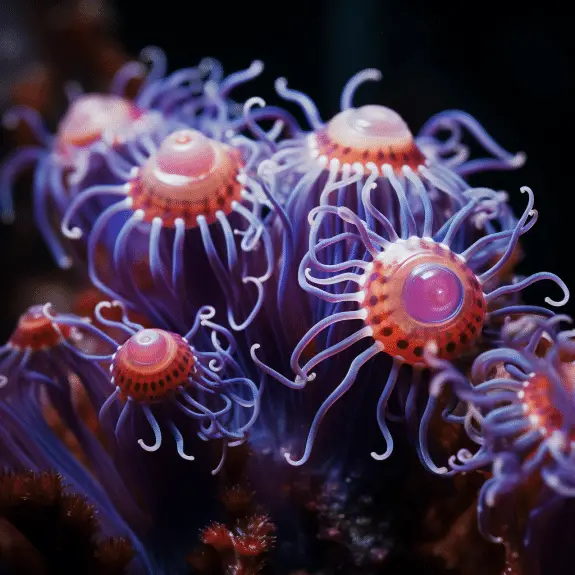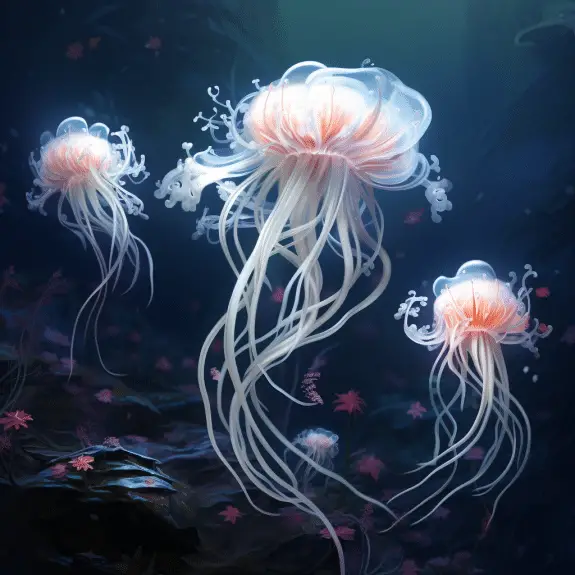Unraveling The Mysteries Of Anemone Tentacles In Marine Biology

Anemones, belonging to the phylum Cnidaria, possess tentacles that serve multiple purposes, including prey capture, defense, and competition. These armed with specialized stinging cells called nematocytes, are an essential aspect of sea anemone biology. Understanding the intricate structure and function of anemone tentacles is key to unraveling the mysteries of their biology and ecological interactions.
Key Takeaways:
- Anemones are marine animals with tentacles, which they use for various purposes.
- Tentacles are armed with specialized stinging cells called nematocytes.
- Anemones possess the ability to regenerate their tentacles.
- Scientific research focuses on the nematocyst composition and venomous properties.
- Understanding anemone tentacle structure is crucial for studying their biology and ecological impact.
The Evolutionary History of Anemone Tentacles

Sea anemones are important in marine ecosystems. They interact with anemonefish. They have a mutualistic relationship. The anemone provides a home for the fish. The fish protects the anemone and helps it survive. Scientists have found that different types of anemone are closely related genetically. They are classified under the Stichodactyla genus.
Genetic research has created queries about anemonefish. It’s not known how anemonefish avoid getting stung, or why they choose certain hosts. More study is needed to understand the genetics and evolution of these interactions.
Exploring the evolutionary history of anemone tentacles provides valuable insights into the biology of these intriguing organisms and their unique associations with anemonefish. By unraveling the mysteries, scientists are able to gain a deeper understanding of the underwater world and the wonders of marine life.
The Exquisite Architecture of Sea Anemone Stingers

Conclusion
The study of anemone tentacle structure is fascinating in marine biology. It reveals the unique adaptations and interactions of these organisms. Anemones have a variety of tentacle structures, including long and short ones. These differences are vital for the survival and ecological impact of anemone species.
The exploration of anemone tentacles has provided valuable information about their roles in symbiotic relationships and ecological dynamics. By unraveling the mysteries, scientists gain a deeper understanding of the secrets held within the realms of marine life. Sea anemone stingers are called nematocysts. They have complex architecture. This helps us understand how sea anemones eat and defend themselves.
By delving deeper into the world of anemone tentacles, scientists can unlock the wonders of the underwater kingdom and reveal the hidden marvels of marine life.
FAQ
What is the structure of anemone tentacles?
Anemone tentacles have a two-dimensional epithelial construction with a hexacorallian body plan. They possess specialized stinging cells called nematocytes, which contain toxins for prey capture and defense.
What are nematocysts?
Anemone tentacles have stingers called nematocysts. These stingers hold venom-filled capsules. They can be used to stun prey or protect against predators.
Can anemone tentacles regenerate?
Yes, anemones have the ability to regenerate their tentacles. This adaptability highlights their resilience and ability to recover from damage.
How do anemone tentacles eat and protect themselves?
Anemone tentacles have intricate stingers that rapidly transform and discharge during prey capture or defense. The venomous thread within the stinger extends and releases barbs into the prey or predator’s tissue.
What is the relationship between giant sea anemones and anemonefish?
Giant sea anemones and anemonefish have a mutualistic symbiotic relationship. The anemone provides protection to the fish, while the fish defends the anemone and enhances its metabolism.
What is the genetic basis of the interactions between anemonefish and anemone tentacles?
Anemones are related and in the Stichodactyla genus. It’s unclear how anemonefish don’t get stung or pick their host. Scientists are researching these topics.
How do sea anemone tentacles capture prey?
Sea anemones have tentacles with stinging cells called nematocytes. These cells have toxins that quickly immobilize prey. The anemone then eats the prey.
What can the study of anemone tentacles reveal about marine life?
The study of anemone tentacles provides insights into the biology, symbiotic relationships, and ecological impact of these organisms. Understanding their structure and adaptations allows scientists to better understand the underwater world and the wonders of marine life.



